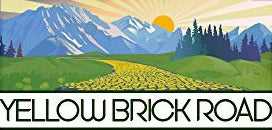
Where Does Shea Butter Come From?
The Origins, Culture, and Global Rise of Africa’s Golden Skin Secret
Shea butter is a staple in the natural skincare world — beloved for its nourishing, soothing, and healing properties. But behind that soft, creamy texture lies a story that begins deep in the heart of Africa, with ancient trees, traditional knowledge, and generations of women shaping a beauty ritual that spans continents.
🌳 The Source: The Shea Tree
Shea butter comes from the shea tree, scientifically known as Vitellaria paradoxa. This tree is indigenous to West Africa and grows wild across the savannah belt, especially in countries like Ghana, Burkina Faso, Mali, Nigeria, and Côte d'Ivoire. These trees are incredibly resilient and can live for up to 200–300 years.
It takes about 20 years before a shea tree begins to produce its first nuts, and it reaches peak production at around 50 years. The nuts are the seeds of the tree’s fruit — and within those seeds lies the raw material used to create the precious butter.
🌰 The Harvest: From Nut to Butter
The process of turning shea nuts into shea butter is labor-intensive and traditional, often performed by hand in rural villages. The steps typically include:
-
Harvesting: Women collect fallen shea fruits during the rainy season.
-
De-pulping: The sweet outer pulp is removed, often eaten or fed to animals.
-
Boiling and Drying: The nuts are boiled to remove impurities and then sun-dried to prevent mold.
-
Cracking and Roasting: Dried nuts are cracked open to access the kernels inside. These kernels are roasted — an essential step that affects the butter’s color and aroma.
-
Grinding: Roasted kernels are ground into a thick brown paste.
-
Kneading and Washing: The paste is mixed with water and kneaded by hand to extract the oils.
-
Boiling and Cooling: The oil is boiled again, filtered, and left to cool into the familiar solid form of shea butter.
This method, passed down through generations, yields unrefined shea butter — known for its ivory color and natural, nutty scent. Some producers refine the butter for cosmetic use, which removes the scent and color but may reduce some beneficial compounds.
👩🌾 Empowering Women & Communities
Over 16 million women across West Africa are involved in shea butter production. This work is more than tradition — it’s a vital economic lifeline.
Many women's cooperatives have been established to produce and export shea butter ethically, ensuring fair wages, safe working conditions, and environmental sustainability. Supporting fair trade shea butter means supporting these women and their communities.
In many areas, the income from shea butter empowers women to send their children to school, access healthcare, and gain independence — making it a tool of both beauty and transformation.
✨ The Global Rise of Shea Butter
Though used in Africa for thousands of years — for skin, cooking, and even medicinal uses — shea butter gained international attention in the 20th century as natural skincare gained traction.
Today, you’ll find shea butter in:
-
Moisturizers and body butters
-
Lip balms and hand creams
-
Hair masks and conditioners
-
Baby lotions and eczema treatments
-
Makeup and sunscreens
Its appeal lies in its natural vitamin content (A, E, F), essential fatty acids, and anti-inflammatory properties — all while being non-comedogenic and gentle for sensitive skin.
🛍️ How to Choose the Best Shea Butter
When shopping for shea butter, look for these keywords:
-
Unrefined or raw: Indicates minimal processing and maximum nutrients
-
Grade A: Highest cosmetic quality
-
Organic or wild-harvested: Better for the environment and often more ethical
-
Fair trade certified: Supports sustainable practices and local producers
Be wary of overly white or scentless versions — these are typically highly refined and may have lost much of their original benefits.
🧴 Final Thoughts
Shea butter is more than just a moisturizer. It’s a symbol of tradition, empowerment, and nature’s generosity. From the sacred shea trees of West Africa to your skincare routine, it carries a story of resilience and care.
So the next time you open that little jar of golden cream, remember:
You’re not just nourishing your skin — you’re honoring a legacy.
💛 Try Our Pure Shea Butter
Experience the power of nature with our authentic, unrefined shea butter, sourced directly from women-led communities in West Africa.
Ready for soft, healthy skin? 👉 Shop now
